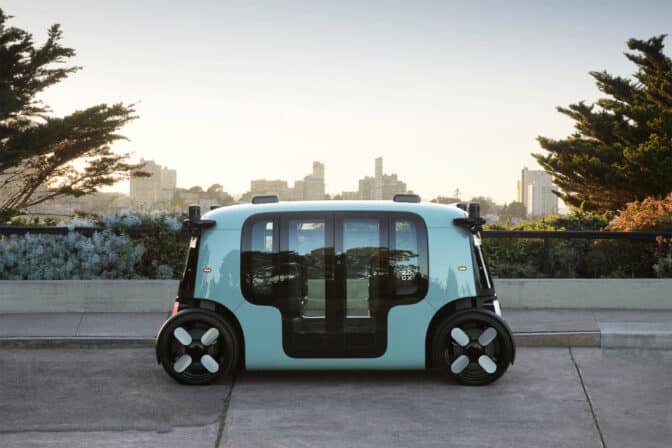In celebration of ZooxTo celebrate Zoox’s 10th anniversary, NVIDIA founder and CEO Jensen Huang recently joined the robotaxi company’s CEO Aicha Evans and co-founder and CTO Jesse Levinson to discuss the latest innovations in autonomous vehicles (AVs) and experience a ride in Zoox’s robotaxi.
In a fireside chat at Zoox headquarters in Foster City, California, the trio reflected on the two companies’ decade-long collaboration. Evans and Levinson highlighted how Zoox pioneered the concept of a robotaxi designed specifically for passenger transportation and created groundbreaking innovations along the way, using NVIDIA technology.
“The world has never seen a robotics company like this,” Huang said. “Zoox started out as just a sustainable robotics company delivering robots to the world in fleet form.”
Since 2014, Zoox has been committed to creating fully autonomous, two-way vehicles designed specifically for ride-hailing services. This sets it apart from an industry primarily focused on retrofitting existing vehicles with self-driving technology.
A decade later, the company is up and running Your robotaxipowered by NVIDIA GPUs, on public roads.
Computing at the core
Zoox’s robotaxis are, in essence, supercomputers on wheels. They’re built on multiple NVIDIA GPUs dedicated to processing the massive amounts of data generated in real time by their sensors.
The sensor suite includes cameras, lidar, radar, long-wave infrared sensors and microphones. The onboard computer system quickly processes the raw data collected by the sensors and combines it to provide a coherent understanding of the vehicle's surroundings.
The processed data then flows through a perception engine and prediction module to planning and control systems that allow the vehicle to safely navigate complex urban environments.
NVIDIA GPUs provide the immense computing power needed for Zoox robotaxis’ autonomous capabilities and continuous learning from new experiences.
Using simulation as a virtual testing ground
Key to Zoox’s autonomous vehicle development process is the extensive use of simulation. The company uses NVIDIA GPUs and software tools to run a wide range of simulations and test its autonomous systems in virtual environments before deploying them in the real world.
These simulations range from synthetic scenarios to replays of real-world scenarios created from data collected from test vehicles. Zoox uses reconditioned Toyota Highlanders equipped with the same sensors and computing packages as its robotaxis to collect driving data and validate its autonomous technology.
This data is then fed into simulation environments, where it can be used to create countless variations and iterations of scenarios and agent interactions.
Zoox also uses what it calls “adversarial simulations,” carefully designed scenarios to test the limits of autonomous systems and uncover potential edge cases.
The company’s comprehensive approach to simulation allows it to rapidly iterate and improve its self-driving software, enhancing the safety and performance of autonomous vehicles.
“We’ve used NVIDIA hardware from the beginning,” Levinson said. “It’s an important part of our simulator, and we rely on the NVIDIA GPUs in the vehicle to process everything around us in real time.”
An orderly way of sitting
Zoox's robotaxi, with its unique two-way design and Carriage SeatsIt is optimized for autonomous operation and passenger comfort, eliminating the traditional concepts of “front” and “rear” of a car and providing equal comfort and safety for all occupants.
“I went to visit you when you were zero years old and the vision was compelling,” Huang said, reflecting on Zoox’s evolution over the years. “The challenge was incredible. The technology, the talent – everything is world-class.”
Using NVIDIA GPUs and tools, Zoox is poised to redefine urban mobility and pioneer a safe, efficient, and sustainable future of autonomous transportation for all.
From test miles to market projections
As the AV industry gains momentum, recent projections highlight the potential for explosive growth in the robotaxi market. Information about Guidehouse There are projected to be more than 5 million robotaxi deployments by 2030, with numbers expected to rise to nearly 34 million by 2035.
The regulatory landscape reflects this progress, with 38 companies currently holding valid permits to test autonomous vehicles with safety drivers in California. Zoox is currently one of only six companies authorized to test autonomous vehicles without safety drivers in the state.
As the industry advances, Zoox has created a next-generation robotaxi by combining cutting-edge onboard computing with extensive simulation and development.
In the image above, NVIDIA founder and CEO Jensen Huang stands with Zoox CEO Aicha Evans and Zoox co-founder and CTO Jesse Levinson in front of a Zoox robotaxi.
